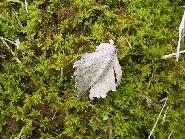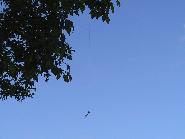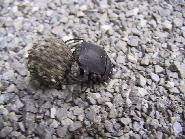More Junkmail from Bob!
Tuesday, May 29, 2001Important Stuff.
For the web version, go to http://xpda.com/junkmail/?issue=88
It's prettier, and since there are lots of pictures today you can see the thumbnail images. I've been slacking lately and haven't sent out a Junkmail for a little while. It shows that you get what you pay for.
Actually I've been writing a program to browse, print, and save pictures. You can resize or reformat several images at once, and you can automatically make a web page out of some images. Here's an example: http://xpda.com/katy (I should warn you that this page has a bunch of unedited and unculled pictures -- the result of last week's bike ride.)
No, I won't try to sell it to you. But if you want to you can download it (4 meg or so), try it out, and email me any problems, comments, or suggestions. It's at http://xpda.com/photomud. You can install it from Winzip or you can unzip it and run setup.exe. As with all the programs I write, there are no bugs in this program. However, you might encounter some unusual design considerations.
Name That Animal
Remember the "Name that animal" quiz in the last Junkmail?

If you still haven't guessed it, this is an ice worm. They were discovered four years ago about 150 miles south of New Orleans, 1800 to 2200 feet below the surface of the ocean. They live in methane ice mounds called gas hydrates.
http://www.science.psu.edu/alert/iceworms.htm
Bucky Drugs
16 years ago two guys, Richard and Robert, discovered a new form of Carbon they named the Buckminster Fullerine. It was a noble project, so they got the Nobel Prize. The Buckminster Fullerine is generally 60 carbon (C60) atoms arranged in a ball, although there may be some minor variations on this theme. It has lots of interesting characteristics, but there haven't been very many practical applications for the molecule other than nanotubes.
Now some new drugs based on C60 are being tested. The theory is that C60 is a good size for interacting with DNA molecules. If it goes well, this could lead to some progress in treating several "incurable" diseases.
http://www.techreview.com/magazine/jun01/innovation4.asp
Here's want a Buckminster Fullerine looks like compared to some other molecules:
http://www.imcnyc.com/carl/models.html
Air Traffic Control
Stefan was a student pilot in Beirut, Lebanon. Last week he was flying a Cessna 150 with a licensed pilot. But Stefan started up the plane and left the licensed pilot behind. While he was taxiing out, he hit an airport worker with the wing of his plane. He went ahead anyway. He took off without authorization, which is not recommended in Beirut. Eventually he flew into Israel, again without authorization. He ended up getting shot down after he refused to acknowledge radio calls, visual signals, and warning shots from Israeli military aircraft. With that kind of brilliance, he may have had trouble passing his exams anyway.
BarCams
Video cameras are getting cheap and they're showing up everywhere. I heard that one company in Pryor has 48 cameras in their office, almost one for every employee. I haven't figured out who has time to watch all that video. Lots of people use video cameras with their computers so they can see each other when they talk over the internet.
I think one of the more creative uses of the cameras is placing them in bars and hooking them up to the internet. That way potential bar hoppers can check out the crowd before they arrive. But a few people complain that their wives or husbands can catch them where they're not supposed to be doing what they're not supposed to be.
http://www.worldcamnetwork.com/barcamcontent.htm
http://www.wired.com/news/privacy/0,1848,43467,00.html
When wireless bandwidth increases enough, people will be able to take small cameras with them almost anywhere and transmit real-time images back to home, office, or internet. It may be several years before this is common, but it's coming.
Infernal Revenue
Quote of the Day: "Some IRS employees are clearly goofing off," Senator Chuck from Iowa.
The Treasury Department's inspector general office looked at the internet use of 16,000 IRS employees. It seems that more than half (51%, to be precise) of their online time was spent doing personal business. 23 percent of the employees were chatting, and 20 percent were doing personal finances, and 7 percent were shopping online while on the job.
The bad news is that the IRS is now imposing new rules on internet use, freeing up all those employees for auditing, tax collecting, and the like. I don't suppose it occurred to anybody that the IRS might be able to get by with 51% fewer employees.
CyberRebate
CyberRebate filed for Chapter 11 bankruptcy protection a couple of weeks ago. I hadn't heard of the company, even though they have been one of the top web sites for the past several months. The company sold products on the internet. But the company also offered rebates of up to 100% of the purchase price.
For example, you could buy a pasta maker for $399.99, and get a rebate for $399.99. So you end up with a free pasta maker, right? Right. Never mind that you can buy the pasta maker elsewhere for $30-$40. After the rebate it's free. Here's the policy:
1. Place your order. (Most of the items are 100% free after rebate)
2. CyberRebate mails your order and posts your rebate forms online.
3. Print and return rebate form, with receipt and UPC code.
4. You can track your rebate status online.
5. CyberRebate send you your rebate check 10-14 weeks after we receive your rebate submission.
Too good to be true? How can the company make money doing that? The "party line" is that some people won't apply for the rebates, and they make interest on the money between the time of purchase and the rebate. Also, according to CyberRebate CEO Joel, people will come back to the site and buy items that don't have the 100% rebate.
It turned out that they couldn't make money doing that. But to prolong the inevitable, they began to lose customer rebate forms, delay rebate payments, and miss shipments despite charging customer credit cards. I read some of the complaints people were making at these web sites, and there seems to be a definite pattern.
Some Complaints
More Complaints
It looks like a pyramid scheme to me. When the growth slowed, they couldn't make the rebate payments. Now they owe about $80 million in unpaid rebates, according to a proverbial unnamed source in the Wall Street Journal. That may be a little high, but there are a lot of people who have gotten burned on this.
Now people are learning that there was a reason for the standard 10-14-week delay in rebate payments. For 8 weeks after a credit card charge it's easy to get the charge reversed. After that there is a lot more work involved. If you add another 2-3 months of excuses and delays by CyberRebate, it's really tough to get a credit card charge fixed. You can see how they might end up owing customers tens of millions of dollars. I wonder where all that money went.
Last February, Brian Livingston of CNet News said about CyberRebate, " My advice? Don't whip out your credit card in hopes that you might get a rebate check three and a half months later." I think he had it pegged.
http://news.cnet.com/news/0-1278-210-4918026-1.html
Dotcom Retirement
Can you imagine how bad it would be to be in charge of an ailing dotcom? Not too bad in some cases, it turns out.
I thought it was pretty bad when the Chairman of Learn2 was loaned $1,194,000 million by the company. Then I thought it was REALLY bad when a company acquiring Learn2 (Estamp) agreed to forgive the entire $1,194,000 loan (plus interest) if the merger goes through. But that's nothing compared to Webvan's departing CEO. He's getting $375,000 per year for life, even though he's leaving the company!
http://www.msnbc.com/news/575253.asp?0na=2312391Y&cp1=1
Deep Impact
NASA is going to send a spacecraft into a comet -- about 50 or 75 feet into one. The Deep Impact probe is going to fly up to the comet Tempel 1. When it gets there in July, 2005, 770 pounds of copper will crash into the comet while some nearby cameras take pictures. NASA practiced this technique on a recent mission to Mars.
http://deepimpact.jpl.nasa.gov/
P4
I'm writing this on my new computer. I got a Pentium 4. As usual, building the computer wasn't as simple as it should have been. I ordered all the parts from microx-press.com and buy.com. That included motherboard, case, memory, CPU, keyboard, video card, floppy drive, hard drive, DVD drive, and CDR drive.
Here's a Pentium 4 chip:

It comes with a substantial heat sink:

Amazingly, nothing was back-ordered and everything arrived on time. I took the motherboard out of the box and started to stick it into the case and I noticed a single sheet of paper stuck in the motherboard box, kind of like an afterthought. I have noticed before that these afterthoughts can be pretty expensive, so I read the paper.
It said that I should be sure that I have a 12V ATX power supply before I hook up the motherboard or it will fry. Well, they might have used different words, but that was the gist of it. The Pentium 4 motherboard takes 3 power connectors instead of the one for the Pentium III.
I hadn't heard of a separate power supply for new Pentiums. I had an ATX power supply, and it had 12 volts output for all the drives, but that isn't what they wanted. I eventually I figured it out and ordered a new case with a P4 power supply.
Mounting the CPU was new. I even had to check the directions to see if you really have to put 4 screws through the motherboard and into the case just to mount the CPU. That means in order to change motherboards you have to remove the CPU first. From that point on it went together fairly easily, though not without some thrashing around, backward cables, et cetera. Lots of et ceteras.
Then it was time to install software. I made a Windows Startup disk complete with fdisk and format. These are two DOS programs you can use to configure and format the hard drive.
The hard drive is an IBM 75-gigabyte drive. I know, there is no way I can ever justify or even fill up a drive that big, but it is relatively cheap and very fast. Later I read that IBM was putting a layer of Ruthenium 3 atoms thick between magnetic layers on its hard drives, allowing 4 times the bit density. I think this one might have that, although I don't know what Ruthenium looks like and I can't see the platters anyway. I think the Ruthenium on the drive was named after my Grandma Ruth.
Anyway, when I ran fdisk it told me I only had a 7-gigabyte drive. I figured that fdisk must not like drives that big. I CAN fill up 7 gigs since Windows and its accoutrements require at least half that, so I gave in and ran the disk that came with the hard drive. It locked up.
I booted on the Windows boot disk and ran the program that was on the IBM disk. It got farther, but locked up again. Then I downloaded a new version of the IBM utility from the web, copied it to a CD, and ran it. It locked up again.
I checked on the internet for other partitioning programs. I didn't see anything I liked. So I ran fdisk again, accepted the 7 gigabytes, and formatted the hard drive. Then I had 73 or 75 gigabytes again. I turns out that fdisk really partitioned the drive for its full size, but claimed that it didn't. It only displays 4 digits even if you have 5 digits of hard drive space. The irritating thing about this is that now I can remember it happening once before. It's pretty bad when you have to make the same mistake twice before you can remember it.
I went on to install Windows and most of the applications I use, and after 30 or 40 reboots I was up and running. I disconnected one of the fans because it was too noisy, but I haven't had a meltdown yet.
Pictures of Today!
This is a gar at a nature center in Rochester, MN:

Some happy turtles just outside:

This picture demonstrates the importance of timing, at least for the spider.

A dead leaf and live moss:

A Minnesota butterfly:

In the spring, trees of various species produce this type of fruit, primarily along shorelines:

Last week Leann, Cathy, and I took a bike ride on the Katy Trail in Missouri.

This guy was rolling down the trail too.

This is Monty Python.


Here's a bright rainbow over Cathy and Leann.

The pot of gold was just across the Missouri River.

Here's the light at the end of the tunnel. It's green.

On top of the world...

(o) 2002, no rights deserved. Duplication and distribution of this fine collection of literary stuff without express written consent is consented to in writing right here.
If you would like to sign someone up to receive Junkmail, or if you are so warped that you'd like to read other Junkmails, go to
http://xpda.com/junkmail
If you would like to stop receiving Junkmail, please email jgranick@cyberrebate.com about your refund, and follow up in the IRS Singles chat room.
I'm Bob Webster and I reside at bob@xpda.com.